The 10 Hottest Hyperconverged Infrastructure Systems
CRN breaks down ten of the hottest hyperconverged infrastructure systems that are ruling the HCI market in 2020.

10 Hot Hyperconverged Infrastructure Products In 2020
Hyperconverged systems have now officially taken over the global converged systems market, accounting for 51 percent of all converged systems sales worldwide in the first quarter of 2020.
The worldwide hyperconverged systems market generated nearly $2 billion in the first quarter, up more than 8 percent year over year, compared with $1.8 billion in the first quarter of 2019, according to data by IT research firm IDC. The hyperconverged infrastructure (HCI) market continues to grow quarter after quarters as the architecture solves various customer’s needs – from simplifying IT environments via a pre-configured and tightly integrated platform of networking, storage, compute and software to better meeting regulatory requirements.
IT hardware and software giants Cisco, Dell Technologies, Hewlett Packard Enterprise, Nutanix and VMware continue to dominate the market, with the five companies combined owning roughly 80 percent of the worldwide HCI market.
Here are the 10 hottest hyperconverged infrastructure solutions of 2020 so far.
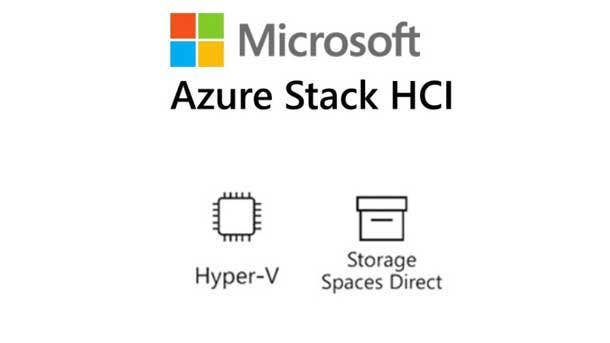
Azure Stack HCI
Microsoft’s Azure Stack HCI is designed for customers who want to run virtualized applications on hyperconverged infrastructure. It was introduced in the Windows Server 2019 Datacenter edition, which follows Microsoft’s initial HCI offering on Microsoft’s Windows Server 2016 Datacenter edition. The software and public cloud titan offers the Azure Stack on a various of hardware including ASUS, Axellio, Cisco, Dell EMC, Fujitsu, HPE, Inspur, NEC and Western Digital.
Azure Stack HCI includes Microsoft’s Hyper-V hypervisor, Storage Spaces Direct for storage virtualization and Azure Monitor to get a global view of system health. Customers can utilize Azure Monitor for containers to better understand the performance and health of clusters from infrastructure to applanation. New Azure Stack HCI enhancements include improved manageability through Windows Admin Center; integration with improved security; and Day 1 support for Samsung’s Z-SSD, Intel Optane, AMD’s EPYC and Intel’s Xeon Scalable processors.
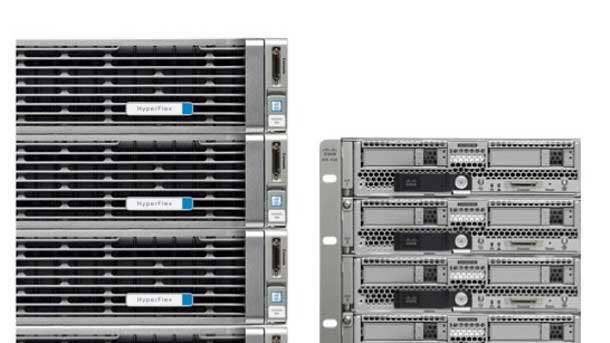
Cisco HyperFlex
Cisco’s HCI HyperFlex product line includes HyperFlex hybrid nodes for general purpose workloads, HyperFlex all-flash and NVMe nodes for mission critical workloads, HyperFlex Edge for remote and branch offices, and HyperFlex compute-only nodes. HyperFlex combines its software HX Data Platform with its UCS server portfolio along with integrated fabric networking. It is a fully integrated appliance that supports VMware vSphere and Microsoft Hyper-V hypervisors, while users can scale compute and storage independently of one another.
To enhance HyperFlex’s capabilities to support workloads, Cisco has launched support for Intel’s latest Xeon Scalable processors and an NVMe hyperconverged appliance that utilizes 3-D XPoint technology in both cache and capacity storage tiers. Other improvements include HyperFlex’s Acceleration Engine, an acceleration card that offloads in-line compression from the CPU to enable petabyte scalability and enhanced Kubernetes support.
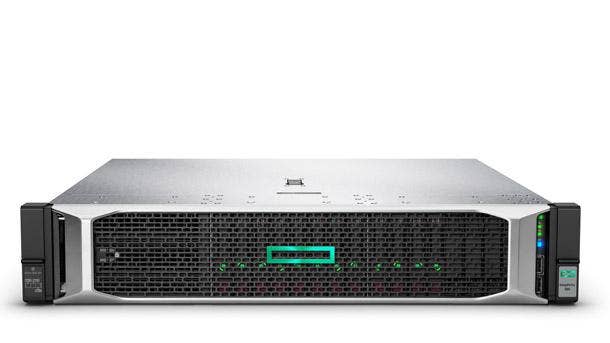
HPE SimpliVity
HPE upped its hyperconverged price/performance game by outfitting both SimpliVity and its Nimble Storage dHCI platforms with AMD’s EPYC Rome processors. The updates are targeted at the virtual desktop infrastructure (VDI) markets including work-at-home and medical and emergency services, which have experienced a significant increase in demand amid the coronavirus pandemic. HPE recently added its artificial intelligence InfoSight predictive analytics software to HPE SimpliVity, while also launching an attack on the midmarket.
HPE SimpliVity is delivered as an appliance, integrating HPE servers, hypervisors, software-defined storage, backup and data services. HPE offers a guarantee on its data services highlighted by data efficiency and reliability. The company has added SimpliVity validated design for Google Cloud’s Anthos for container-based private or hybrid cloud, as well as releasing an AMD-based single-socket HPE SimpliVity 325 offering for remote office/branch office and edge.
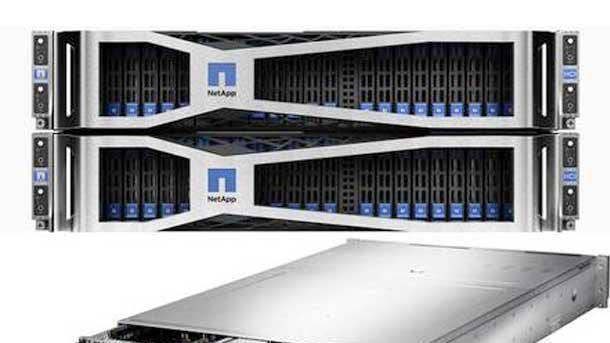
NetApp HCI 2 Node
NetApp this year began shipping a new version of its hyperconverged infrastructure line targeting remote office and edge deployments. The new NetApp HCI 2 Node has the same architecture and management capabilities of the original NetApp HCI product line. NetApp HCI 2 Node is the distributed enterprise version of NetApp HCI optimized for remote work and edge infrastructure.
NetApp’s HCI architecture allows customers to consume public cloud services on-premises with the capability of scaling compute or storage nodes independently. The platform is based on SolidFire and its Element software to enable workload protection for applications. NetApp’s hyperconverged infrastructure includes its Data Fabric unified suite of data services that provides consistent data services across on-premises, private cloud and public cloud platforms such as AWS, Google Cloud and Microsoft Azure. NetApp’s Kubernetes Service on HCI not only automates the deployment of Kubernetes but includes an application orchestration tool and access to the company’s application marketplace.

Nutanix HCI
Hyperconverged infrastructure running Nutanix’s HCI software represented 28 percent share of the worldwide HCI systems market in the first quarter of 2020. Nutanix HCI is composed of its software stack, which includes software-defined storage, AOS; an infrastructure control plane, Prism; and its AHV hypervisor. In June, Nutanix added Foundation Central to allow IT teams to deploy private cloud infrastructure on a global scale from a single interface, new lifecycle management features, as well as Nutanix Insights to provide predictive health and automated support services to help streamline operations.
Nutanix offers subscription, term-based software licenses that are portable across hardware platforms – including Dell, IBM, Fujitsu, Lenovo, HPE and Inspur – and public clouds. Although Nutanix is pivoting its focus to cloud services, the company consistently upgrades its Enterprise Cloud Platform with new products like Calm for application orchestration, Files for unstructured data and Xi Beam for multi-cloud governance and cost control.
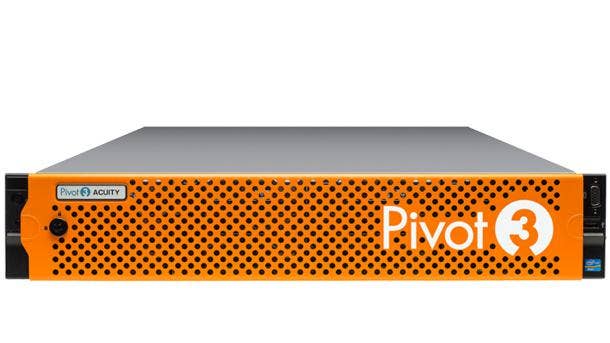
Pivot3 Acuity
Pivot3’s Acuity hyperconverged infrastructure focused on video surveillance, video analytics, virtual desktop infrastructure (VDI) and mixed workloads, targeting large scale applications in federal, healthcare and education markets. Pivot3 has incorporated security policy management features, including policy-based data-at-rest encryption and algorithm offloading, while also offering a Virtual Security Operations Center to allow customers to replace expensive graphics-enabled workstations with an HCI offering that delivers secure client desktops. Pivot3’s largest defense and intelligence deployments are advanced VDI use cases.
The Acuity platform features data protection, data security, NVMe flash caching that can run multiple and mixed workloads, as well as what it dubs as “all-flash HCI” which consolidates heavy workloads that need the highest flash speeds. Pivot3’s capabilities allow clients to get a highly scalable and reliable video platform that can also operate edge workloads. The company’s Intelligence Engine prioritizes resources to the mission-critical workloads.
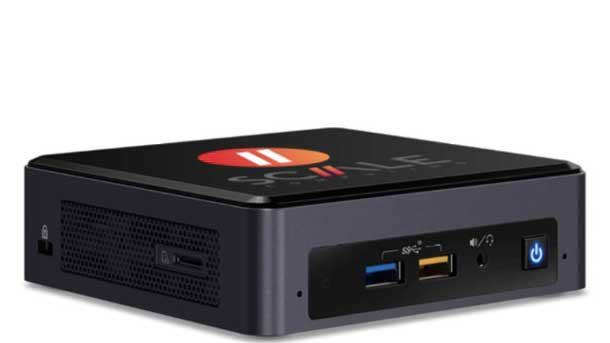
Scale Computing HC3
Scale Computing recently put its full HC3 hyperconverged solution into ultra-small Lenovo M90n Nano and Intel NUC products to run full mission-critical apps at the edge. The new HE150 is an all-flash, NVMe storage-based appliance consumes less than one-gigabyte of memory in a small device RAM footprint that a person can “literally carry in one hand,” said Scale’s CEO Jeff Ready. The HE150 includes HC3 Edge Fabric which eliminates the need for a backplane network switch requirement to lower TCO.
Scale Computing’s flagship HC3 virtualization platform leverages its own KVM-based hypervisor together with its management, compute, storage pooling and network virtualization capabilities. HC3 is used primarily in edge and remote office/branch office deployments and the primary data centers of small and medium enterprises for business-critical and consolidation workloads. The company provides extremely low-cost offerings that require limited hardware investment for edge locations.
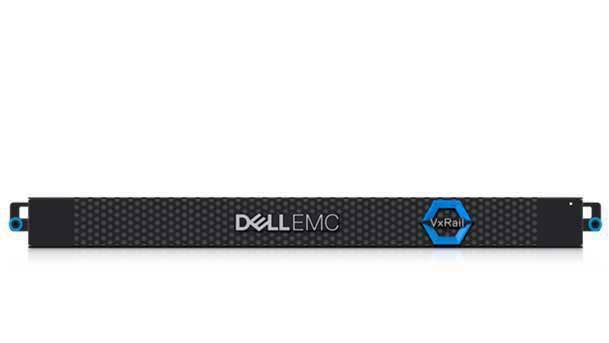
VxRail D-Series
Last month, Dell Technologies launched its first-ever ruggedized VxRail D-Series, the company’s smallest and lightest hyperconverged system ever that is available at a starting price point of approximately $20,000 per 3-node cluster with one-year of ProSupport. The new compact and durable D-Series is only 20 inches deep and designed for the edge to withstand extreme temperatures, sustain 40G of operational shock and operate at up to 15,000 feet.
The VxRail D Series is ideal for industries such as manufacturing, industrial and oil and gas environments where conditions can create a technical challenge or space is limited such as onboard ships at sea or equipped in aircrafts. VxRail, the world’s leading HCI system, is a jointly engineered solution between Dell and VMware. Dell Technologies owns one-third of the global hyperconverged system market, generating $666 million in sales in the first quarter of 2020, up more than 13 percent year over year.
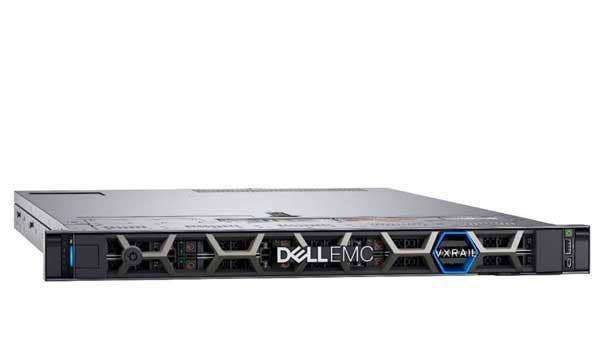
VxRail E-Series
For the first time ever, VxRail has been equipped with AMD-based processors with the launch last month of Dell Technologies VxRail E-Series. The new VxRail E-Series includes 2nd generation AMD EPYC professors that offer customers up to 64 high performance cores and support for PCIe 4. Coupled with high-efficiency power supply, the compact 1U systems are ideal for customers that need high-performance computing power in a single socket platform for edge environments. Prior to the E-Series, VxRail traditionally leveraged Intel-based processors.
The new VxRail E665 system is available in NVMe, all-flash, or hybrid storage configurations. It offers high performance in a single-socket model and is an ideal option for database, unstructured data, virtual desktop infrastructure (VDI) and high-performance computing (HPC) workloads. Dell also recently introduced the VxRail Analytical Consulting Engine (ACE), a cloud-based centralized data collection and analytics platform to simplify the management of VxRail clusters.
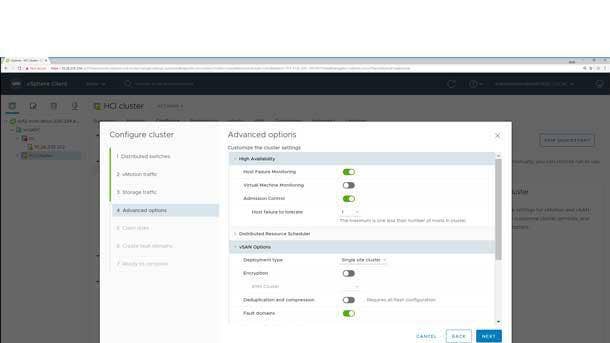
VMware vSAN
VMware’s vSAN is the worlds most used hyperconverged software with vSAN ReadyNodes certified on systems such as VxRail, Fujitsu PRIMEFLEX, HPE Integrated ReadyNodes, Hitachi UCP and Lenovo ThinkAgile VX. VMware’s vSAN product natively integrated with its vSphere hypervisor and is included in VMware Cloud Foundation (VCF), available both on-premises and in every major public cloud including AWS, Microsoft Azure, and Google Cloud Platform. vSAN ReadyNodes are jointly certified by both VMware and more than 15 OEM vendors.
VMware reigns supreme in the hyperconverged software market in the first quarter of 2020 by capturing a whopping 42.4 percent market share, up from 41.5 percent share year over year. Systems running VMware software represented $841 million in the first quarter, a revenue increase of nearly 10 percent year over year. VMware been expanding HCI on-premises via VMware Cloud Foundation, consisting of vSphere, vSAN, NSX, vRealize and life-cycle automation to accelerate private cloud deployments.